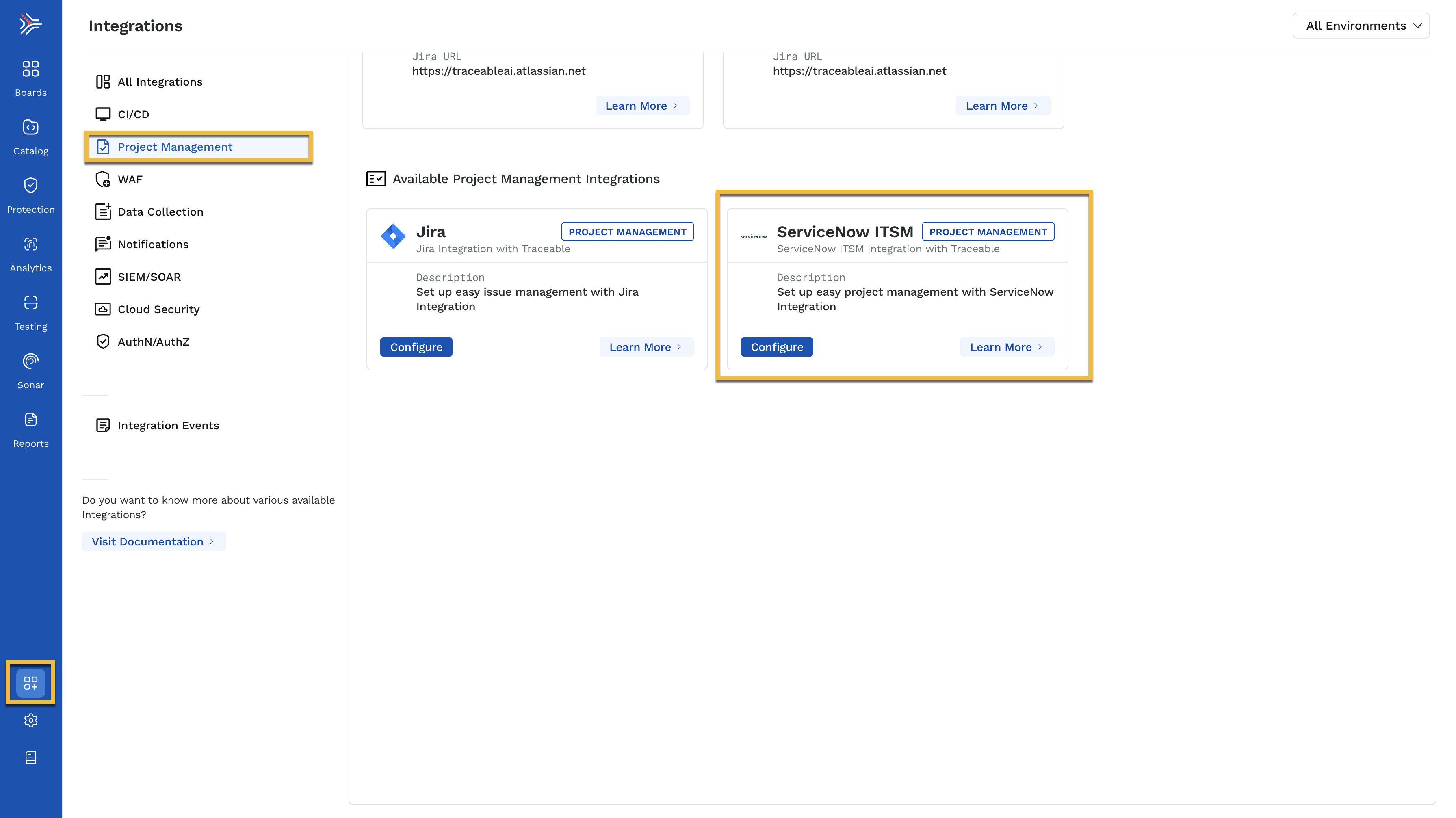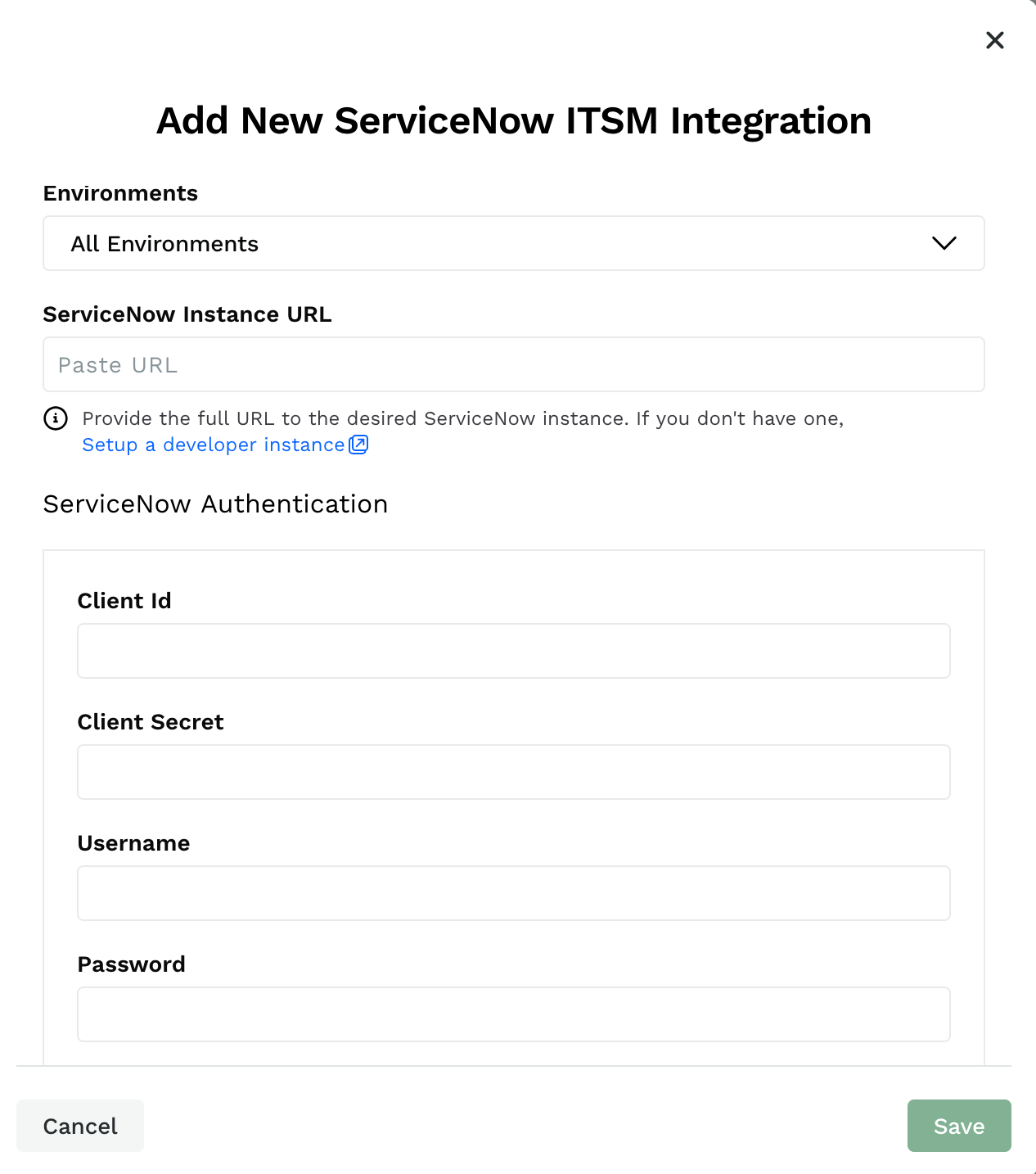Updates (January 2025 to March 2025)
The topic has been created to explain how you can configure the ServiceNow ITSM integration and connect it with the Traceable platform. The integration automates vulnerability and threat logging, enabling you to manage and respond to security issues efficiently.
Integrating Traceable with your IT Service Management (ITSM) platform empowers your organization to detect, track, and respond to API security threats efficiently. This integration ensures that identified vulnerabilities and suspicious activities are seamlessly logged and tracked within your ITSM workflows. By automating ticket generation and linking security events directly to your IT service processes, the integration enhances operational efficiency and strengthens your organization's ability to respond to threats proactively.
Note
You can have one or more than one ITSM integration. You can select one ITSM integration for all the environments, or choose to select individual ITSM integrations for each environment.
Before you begin
Make a note of the following points before proceeding with the integration:
Note the Client ID and Client Secret to authenticate with ServiceNow. You can fetch the Client ID and secret by navigating to System OAuth → Application Registry in ServiceNow.
The user must have
itilrole in ServiceNow.
Integration
Complete the following steps to integrate ITSM with Traceable:
Navigate to Integrations → Project Management. Click on the ITSM card.

Configure the following fields:
Integration name — A name for the integration, such as "ServiceNow Integration with Traceable."
Description — A brief description of the integration, for example, "ServiceNow Integration for Retail Development Team."
Environments — A dropdown to specify the Environments where the integration will be applied (e.g., "All Environments").
ServiceNow instance URL — The URL of the ServiceNow instance that Traceable will communicate with. A ServiceNow Instance refers to a unique, cloud-based environment provisioned for an organization to use the ServiceNow platform. Each instance is identified by a unique URL, typically in the format:
https://<instance_name>.service-now.comServiceNow Authentication — Configure the following for authentication:
Client ID — Client ID is a unique identifier or username assigned to a specific application or system (in this case, Traceable) when it wants to communicate with ServiceNow.
Client Secret — The Client Secret is like a password associated with the Client ID. It proves that the application (Traceable) is authorized to access the ServiceNow system.
User name — This is a username for a human or system account with
itilrole in ServiceNow. It identifies who or what is accessing ServiceNow’s services.Password — Password for the above username.

Click Test Connection to validate the connection between Traceable and the ServiceNow instance using the provided credentials.
Click Save. The Save button is enabled only when the connection test is successful in Step 3.